Clashes between Colombian authorities and the Revolutionary Armed Forces of Colombia (FARC) continue to plague the nation as two attacks in Colombia’s Cauca Department, which is located in the south-west of the nation, erupted on Thursday.
Continued Attacks:
The attacks followed the dissolution of a ceasefire between the two in March, following an attack on an indigenous community. The first attack began in Corinto, where the FARC engaged authorities after targeting the local police department located in the heart of the municipality. By 20:00 local time, the Colombian military mobilized troops in order to support local authorities, leading to a protracted firefight between authorities and guerrillas.
Corinto has been the target of the FARC on multiple occasions, with the police reporting engagements with the armed group in February 2023 while a car bomb was detonated in front of the mayor’s office, which left 17 people injured.
In another case, a car bomb was detonated in Miranda, another municipality in Cauca. The bomb, which some believe to have been placed by the FARC, detonated in a residential neighborhood, leading to at least four people sustaining injuries while nearby buildings faced damage.
Es infame dejar un carro con explosivos frente a viviendas.
Condeno enérgicamente la ola de atentados que viene azotando al Cauca. Lo del carro bomba en Miranda
no es una demostración de fuerza sino de violencia.Toda mi solidaridad y mi apoyo para las comunidades del Norte… pic.twitter.com/UXPHMxfzFN
— Jorge Bastidas – Pacto Histórico (@Jorge_BastidasR) April 12, 2024
The Government’s Operations:
While the FARC has launched a number of attacks against the Colombian government, authorities have launched several offensives against the armed group, resulting in dozens of arrests, the seizure of narcotics, and the breaking up of illegal mining operations.
In Valle de Cauca, a department just north of Cauca, authorities, in a multi-organizational operation between the Colombian national police, army, navy, and air force, destroyed six excavators, an industrial engine, two electric motor pumps, and other tools used in an illegal mine operated by the FARC.
The seized equipment had an estimated worth of 2.1 billion pesos (550 thousand USD), while the mining operation itself is thought to have produced 290 million pesos (75.7 thousand USD) in monthly revenue, with 7,200 grams of gold being extracted each month.
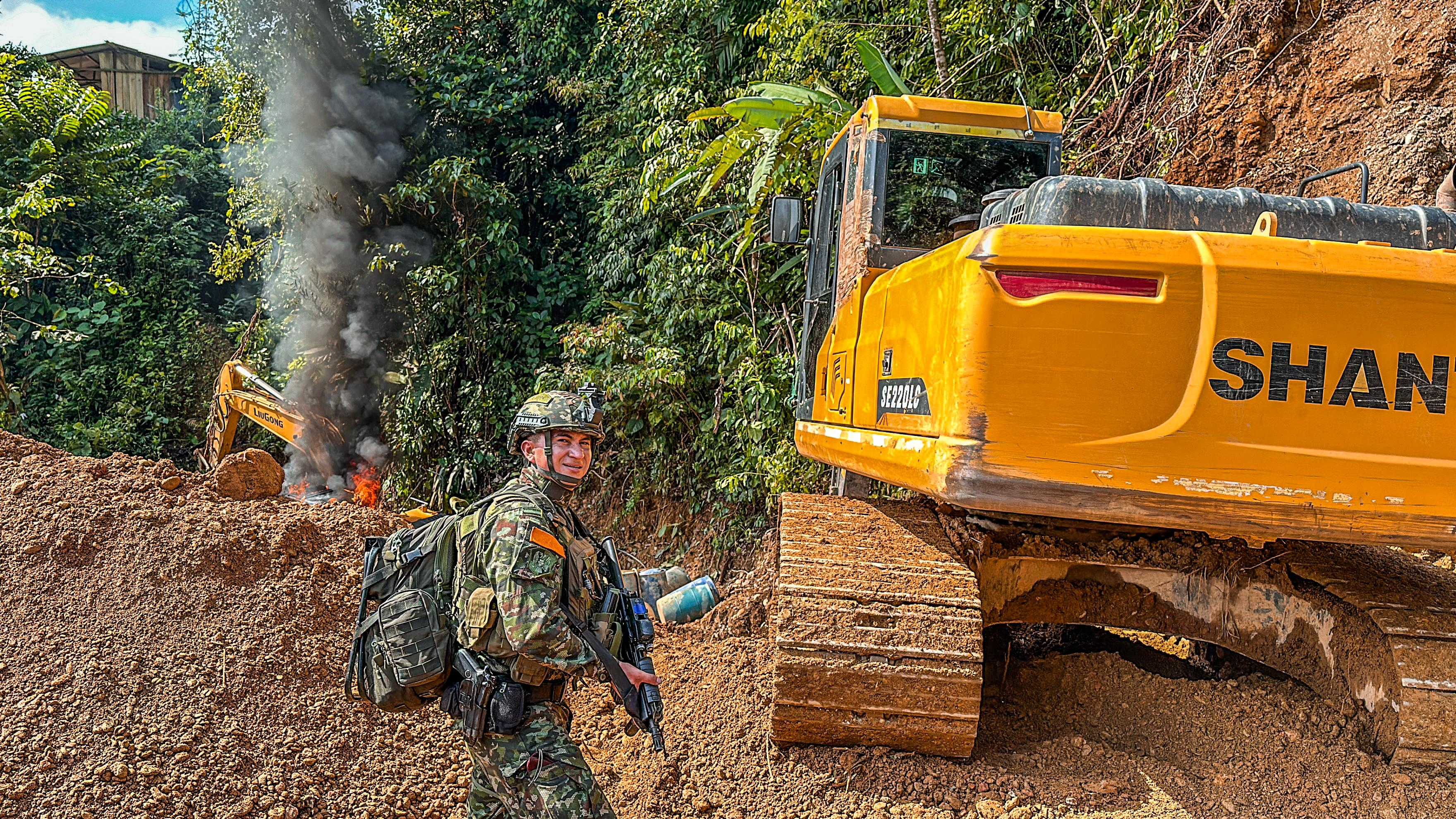
Another operation carried out by Colombia’s armed forces revealed a hidden runway used by the FARC in Antioquia, a region that is hotly contested between the FARC, who are allied with the fellow communist guerilla group known as the National Liberation Army (ELN), and the Gaitanist Self-Defense Forces of Colombia (AGC), also known as Clan del Golfo.
This operation saw the seizure of a light aircraft, which authorities deemed to have been intended to be used “for mobility actions, attacks against the public force and the civilian population, as well as the transport of weapons.”
Authorities dismantled both the runway and the aircraft, which were discovered in an operation that lasted two hours; however, no arrests have been announced in connection with this operation at this time.
Conflict within the FARC:
Reports have emerged, however, that there has been some degree of conflict within the FARC. While the organization has been largely decentralized since the 2016 peace agreement between the FARC and the Colombian government, which saw the majority of the FARC disarm and return to civilian life,.
Those who rejected the peace deal typically have connections to two major factions: the Estado Mayor Central faction (FARC-EMC), which is commanded by Iván Mordisco and operates in southern and eastern Colombia, or the Second Marquetalia, which is now headed by the group’s founder, Iván Márquez.
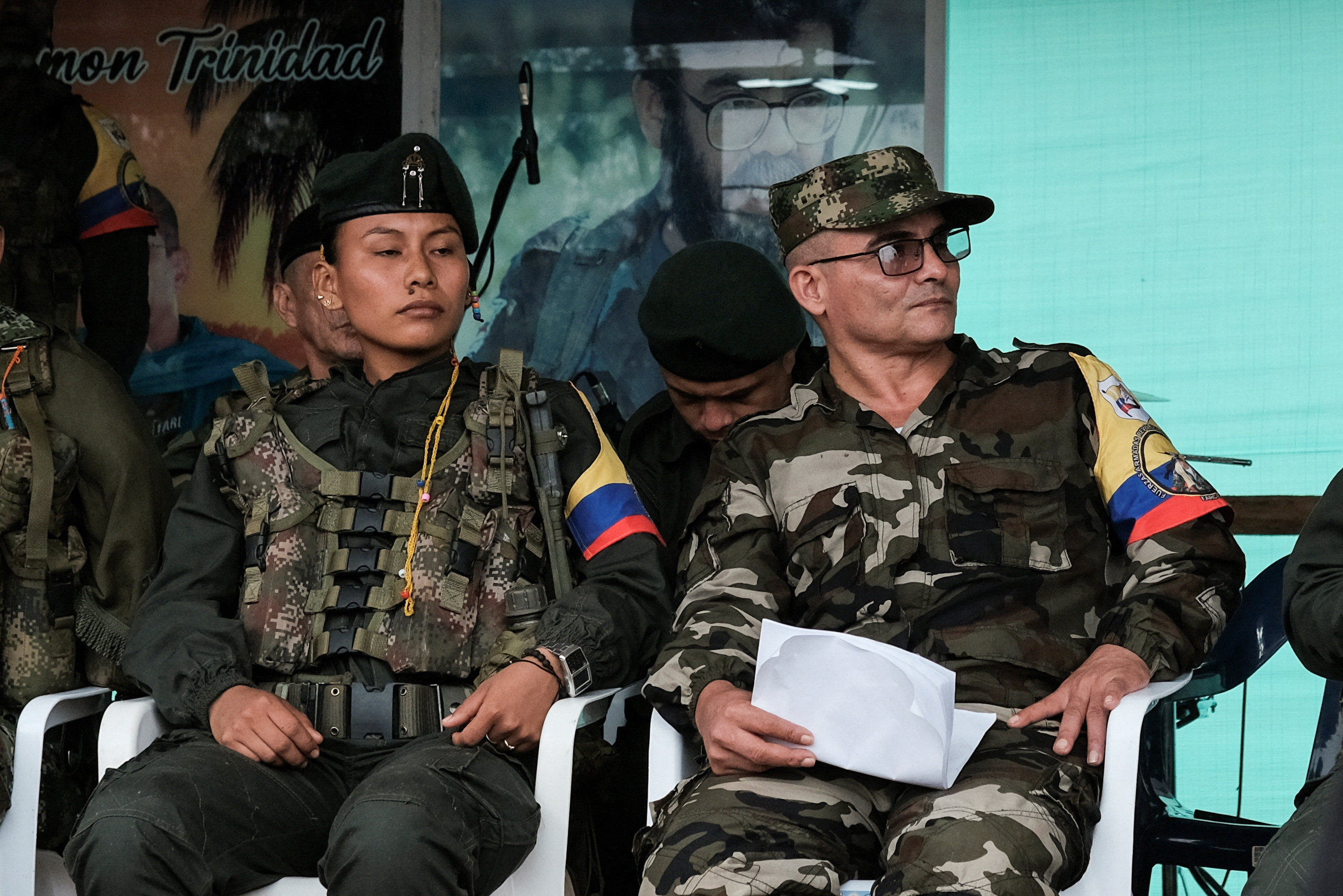
These two factions are made up of a number of smaller factions known as “fronts,” a leftover from the FARC’s more structured years prior to the ceasefire. While some of these fronts are under the direct control of the leaders of the EMC or the Second Marquetalia, many of them remain largely independent, planning and overseeing their own operations, both militaristic and financial.
However, conflict within the FARC has taken another turn with the death of the leader of the 28th Front’s romantic partner, known only as “Alexa.” Following her death, Omar Pardo Galeano, the leader of the front, who is also known as Antonio Medina, initiated a purge of the 28th front, convinced that a member of the group had provided information to authorities, which led to the death of Alexa. These claims of a purge come from a source close to the group that spoke to Semana, a Colombian news outlet.
“The internal purge stems from the fact that the woman was the sentimental partner of the ringleader, and those in charge of security would have allowed the troops that are in operations in the area to reach her without any kind of protection,” the source told Semana.
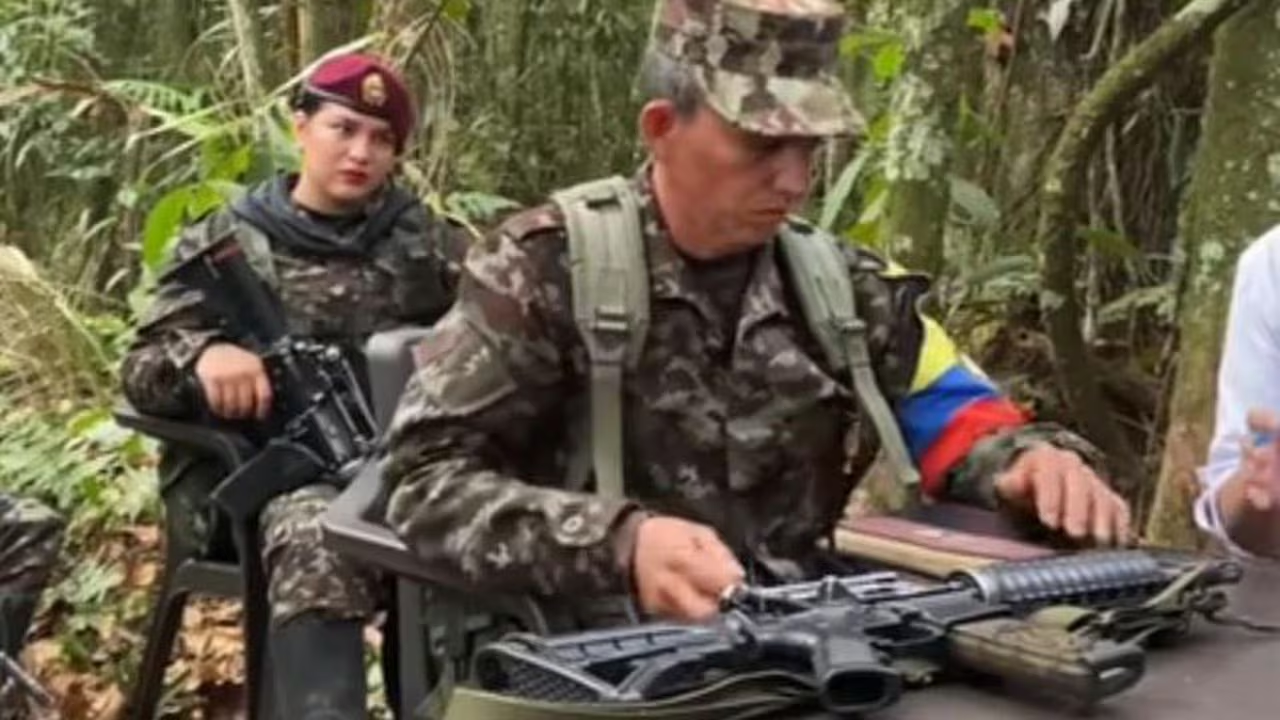
The FARC has become considerably more powerful following President Gustavo Petro’s ongoing desire to bring an era of “total peace” to Colombia, hoping to end the nearly 60-year-long armed conflict between the Colombian government and the various armed groups within the country. The FARC and other armed groups have managed to grow in power both by gaining new territory and replenishing their manpower, which saw a decrease in military operations following Petro’s 2022 presidential win and the subsequent initiation of the planned “total peace.”
Analysis:
Conflict between the Colombian government and the FARC is expected to continue due to the dissolution of the October ceasefire. Despite the relative youth of the dissolution, Semana has previously reported that the Colombian government would reinitiate peace talks in April. While peace talks between the two organizations have not yet been revived, it continues to be a possibility for late April or even May.
The peace process between the government and the various armed groups in the country will likely continue to progress at a slow rate, as Colombian officials will have to struggle with negotiating with organizations that have become more criminal rather than ideological.
A Broken Truce:
The ceasefire would be broken following an attack by the FARC on an indigenous community, which killed a community leader and wounded two others.
The community leader, Carmelina Yule Pavi, was killed after attempting to help two minors who were in the process of being kidnapped by the FARC, likely to serve as forced conscripts in the organization’s war against the government.
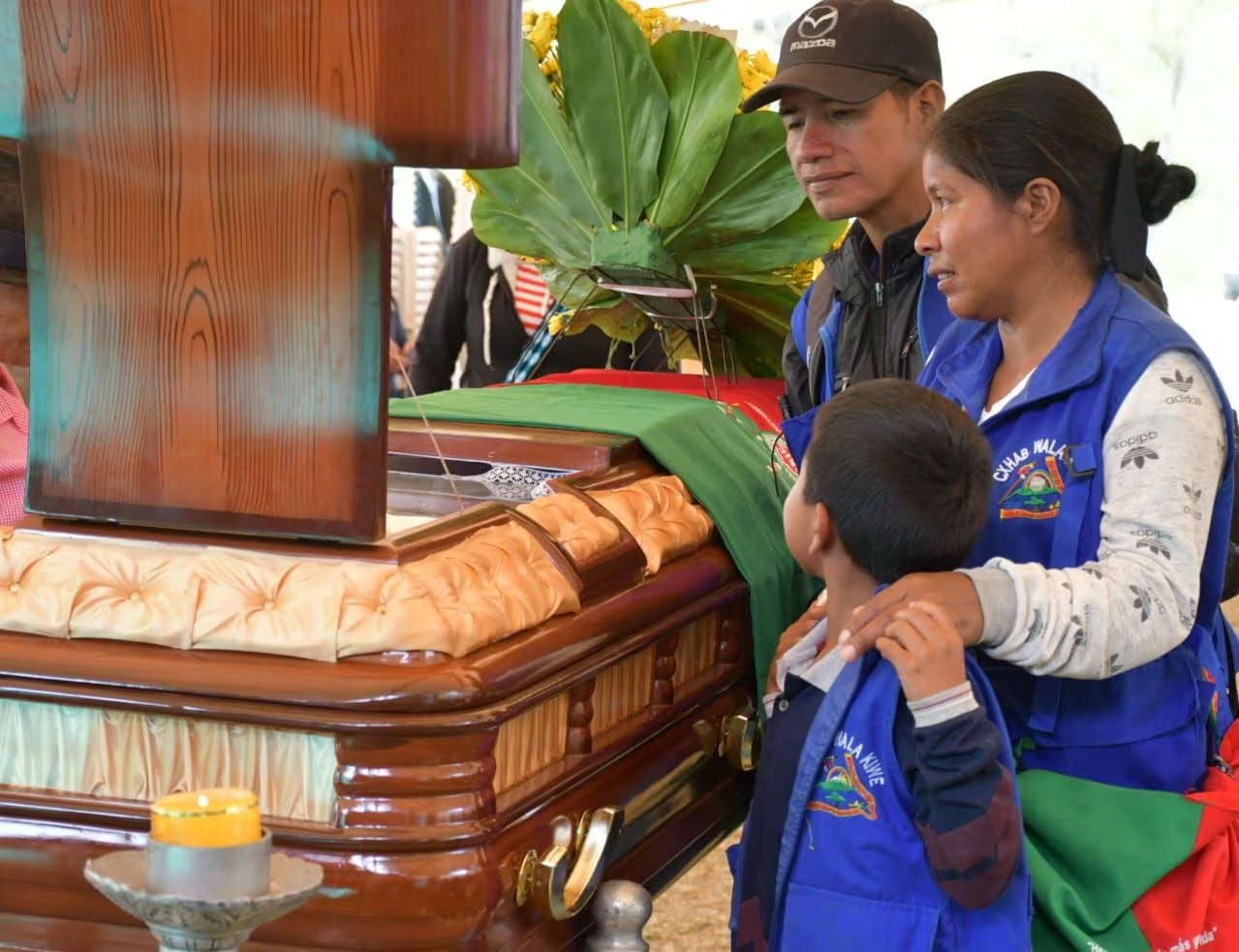
Attacks against this community did not stop, however, as the caravan that was transporting Yule’s body was attacked by the FARC.
The community would identify five of the attacker’s identities; those alleged to be responsible for the attack are known as Zapata, Brayan, Amazonas, Pulga, and Cabañas. The community further stated that if the FARC fails to release two other minors it kidnapped on Tuesday, the community will mobilize.
“During the night, we will call for a territorial mobilization like never before seen in the history of Çxhab Wala,” the Association of Indigenous Councils said in a post on Facebook, “which will be reinforced during the day tomorrow by the other territories of Páez, and we will proceed to rescue the minors.”
“Los que dispararon son unos cobardes”: el desgarrador testimonio de Francy Liliana Ascué, nieta de la líder indígena Carmelina Yule, quien presenció todo el ataque de las disidencias de Iván Mordisco contra una comunidad desarmada. https://t.co/if1kX8q65f pic.twitter.com/oYPxoZAWBw
— Revista Semana (@RevistaSemana) March 19, 2024
Following the broken truce, the Colombian military would engage in operations against the FARC, leading to a clash in Putumayo, located in southern Colombia.
The Colombian Military would state in a post on X after the clash that four members of the Carolina Ramírez Front, a part of the FARC, have been detained while “29 explosive devices, five rifles, a pistol, abundant ammunition, communications equipment, as well as quartermaster material have been seized.”
FARC:
The FARC, otherwise known as the Revolutionary Armed Forces of Colombia, were originally leftist guerillas dedicated to bringing class revolution to Colombia during a period in the nation’s history known as “La Violencia,” otherwise known as the Violence. This period followed the assassination of the Liberal Party’s leader and presidential frontrunner, Jorge Eliécer Gaitán, in 1948, an assassination that would throw Colombia into chaos.
After his death, leftists in Bogota began what is known as the Bogotazo, a massive riot that quickly expanded across Colombia, leading to La Violencia. A number of right-wing paramilitary organizations and leftist guerilla groups would be formed during this period of Colombian history.
One of the most well-known was the Revolutionary Armed Forces of Colombia, or FARC. The group would find its formation after a failed attack in 1964 by the Colombian military on what was known as a self-defense community, one of a number of communist-held areas in rural Colombia. Despite the communists only having 48 active fighters opposed to the 16,000 Colombian soldiers, the group would survive the attack and escape to the nearby mountains where the FARC would be formed.
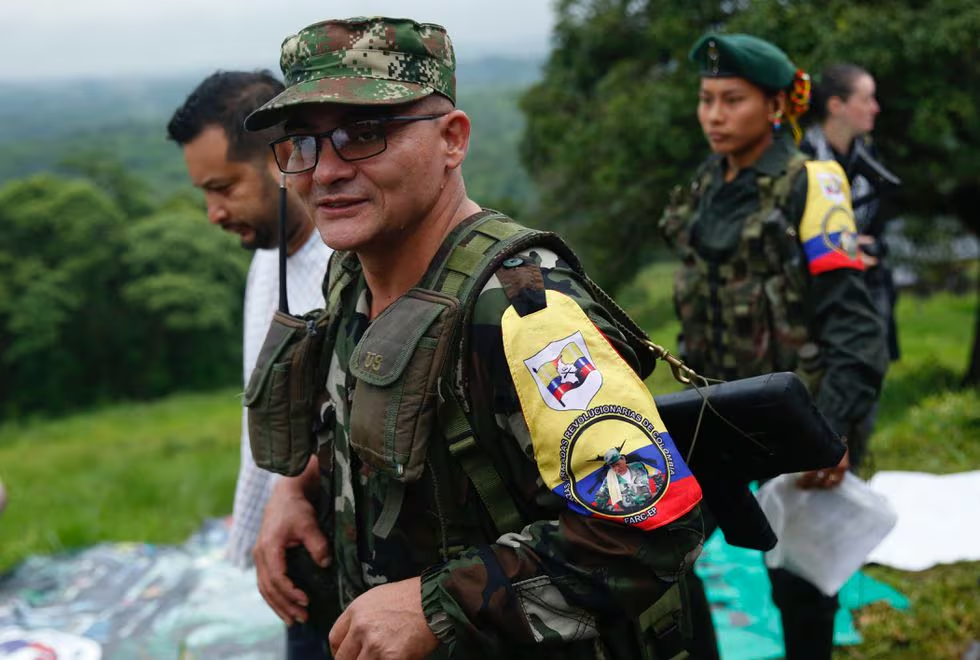
Since then, the FARC has operated as rebels, launching guerilla attacks on military convoys and strategic targets. Despite originally being made up of only 48 fighters, the group’s ranks would swell to the hundreds in later years. For much of its early history, the FARC would be limited to small-scale guerrilla encounters with government forces, but after what has been coined the “Coca Boom,” a period in which the production of cocaine skyrocketed, the group found itself with more funds to allocate to their operations.
The FARC would expand their operations into urban Colombia following the Seventh Guerilla Conference in 1982, largely due to their increase in funds. The group would also begin to send promising troops to the USSR and Communist Vietnam for advanced training.
The FARC would eventually agree to a momentous ceasefire with the government in 2016, which would see the bulk of the FARC disarmed and disbanded. Despite the ceasefire, however, a number of members of the FARC continued their operations against the government and the people of Colombia. These groups would label themselves as “fronts,” a leftover from the group’s original structure, with two factions emerging.
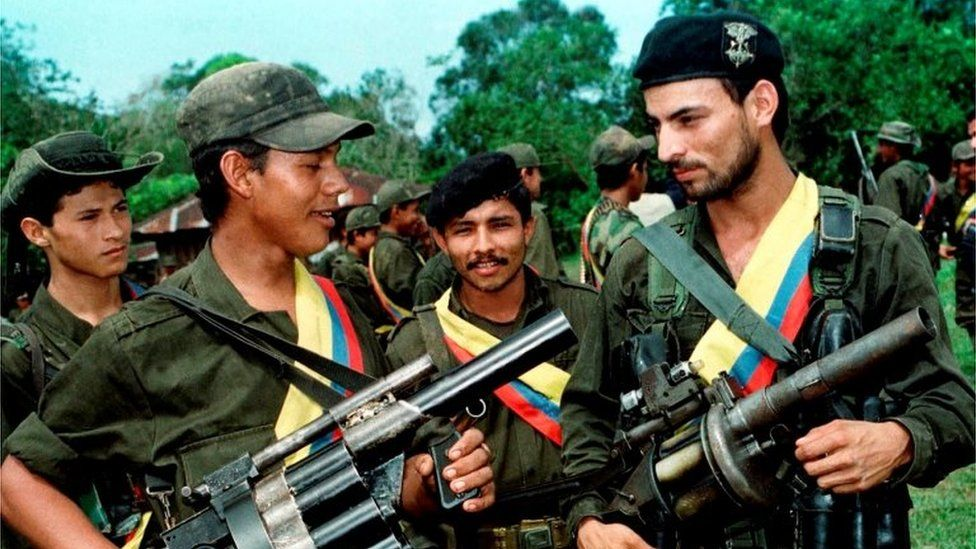
The first, the FARC-EMC, would be founded by Gentil Duarte, who was sent back to Colombia amid the peace conference in Cuba due to Iván Mordisco separating himself and his soldiers from the peace process. The two would send out messengers to a number of commanders of the FARC’s other fronts, seeking to unite them into one body and continue the organization’s armed struggle against the government. This would succeed, and in 2017, Duarte and Mordisco would announce the birth of the FARC-EMC.
Their main rival would prove to be the Second Marquetalia, which was formed by a number of former FARC commanders, many of whom previously accepted the ceasefire but would rearm in 2019. The group’s main territory encompasses the Venezuelan-Colombian border, where the FARC has historically enjoyed a great deal of protection from authorities in Venezuela. The Second Marquetalia would even come into conflict with another dissident faction of the FARC. This faction, known as the 10th Front, had refused to support the leaders of the Second Marquetalia, who had attempted to pull rank on the dissidents in Venezuela following their rearmament. Following the refusal, the 10th Front would face direct action by Venezuela’s military, in what Insight Crime reports was an attempt to grant further power to the Second Marquetalia.


